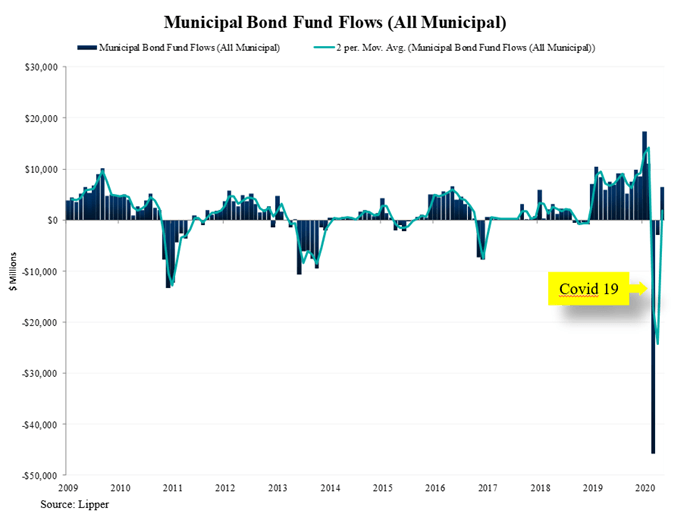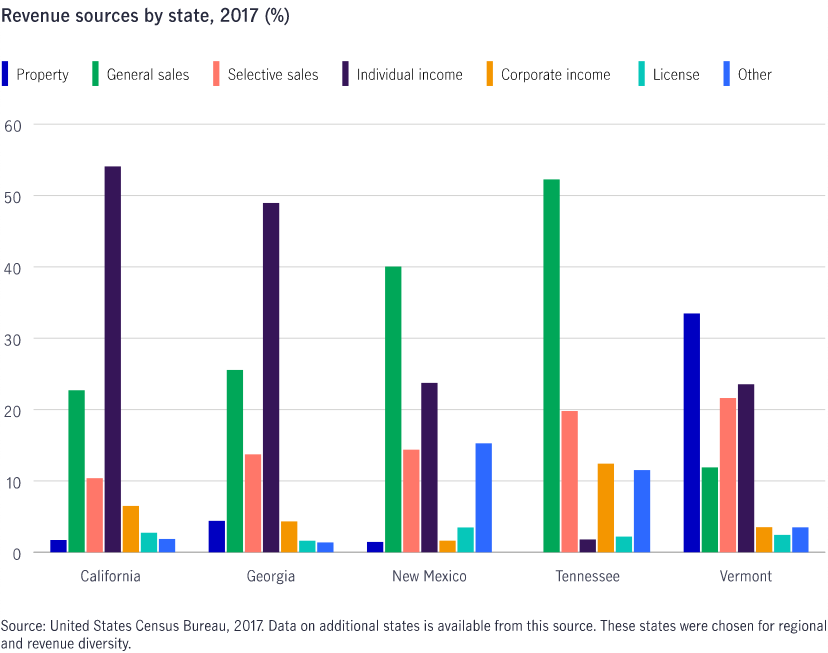Let’s take a look at how the muni bond market changed following the COVID-19 pandemic.
Be sure to check out our Education section to learn more about municipal bonds.
COVID-19’s Impact on Munis

The Federal Reserve cut interest rates to zero by mid-March and introduced the Municipal Liquidity Facility (MLF) – a $500 billion emergency lending program for state and local governments – in early April. In subsequent months, the central bank expanded the scope and duration of the program, which helped stabilize the market from a liquidity standpoint.
While the initial sell-off was driven by a demand for liquidity, the long-term concern stems from deteriorating credit quality as key revenue streams dry up. The $2.2 trillion CARES Act provided relief to individuals, businesses and hospitals, as well as set aside $150 billion in federal fiscal support for state and local governments, which helped stabilize the medium-term outlook.
The combination of Federal Reserve liquidity and fiscal support has helped the market recover to a large extent, but there are several areas that remain vulnerable. For example, revenue bonds that rely on mass transit and airports may have a lower debt coverage ratio and an increased risk of default over the coming quarters.
Use our Screener to find the right municipal bonds for your portfolio.
What It Means for Investors
Despite the recovery, investors shouldn’t be complacent about municipal credit because the COVID-19 pandemic could lead to permanent behavioral changes. State and local governments with weak balance sheets could find themselves under pressure over time as government and central bank support measures begin to phase out into next year.

In the above chart, differences in revenue sources by state show the vulnerability to specific sectors. California generates most revenue from income taxes while Tennessee relies on sales tax – the latter could be more vulnerable to budget shortfalls stemming from lockdowns.
The best opportunities in the market may be tobacco, electric, water and sewer revenue bonds, which provide higher yields than general obligation bonds with relatively low risk compared to airport, mass transit and other types of revenue bonds that may experience more volatile revenue streams that increase their risk of default.
General obligation bonds could continue to be a safe-haven asset class in most cases since state and local governments have taxing authority to help support payments. While defaults have remained low thus far, bondholders should keep an eye on state and local government reserves. A decrease in tax income could lead to a decline in reserves, which could be a leading indicator of trouble repaying bonds.
Don’t forget to check out this article to know more about the future of American cities beyond 2020.
The Bottom Line
Sign up for our free newsletter to get the latest news on municipal bonds delivered to your inbox.

